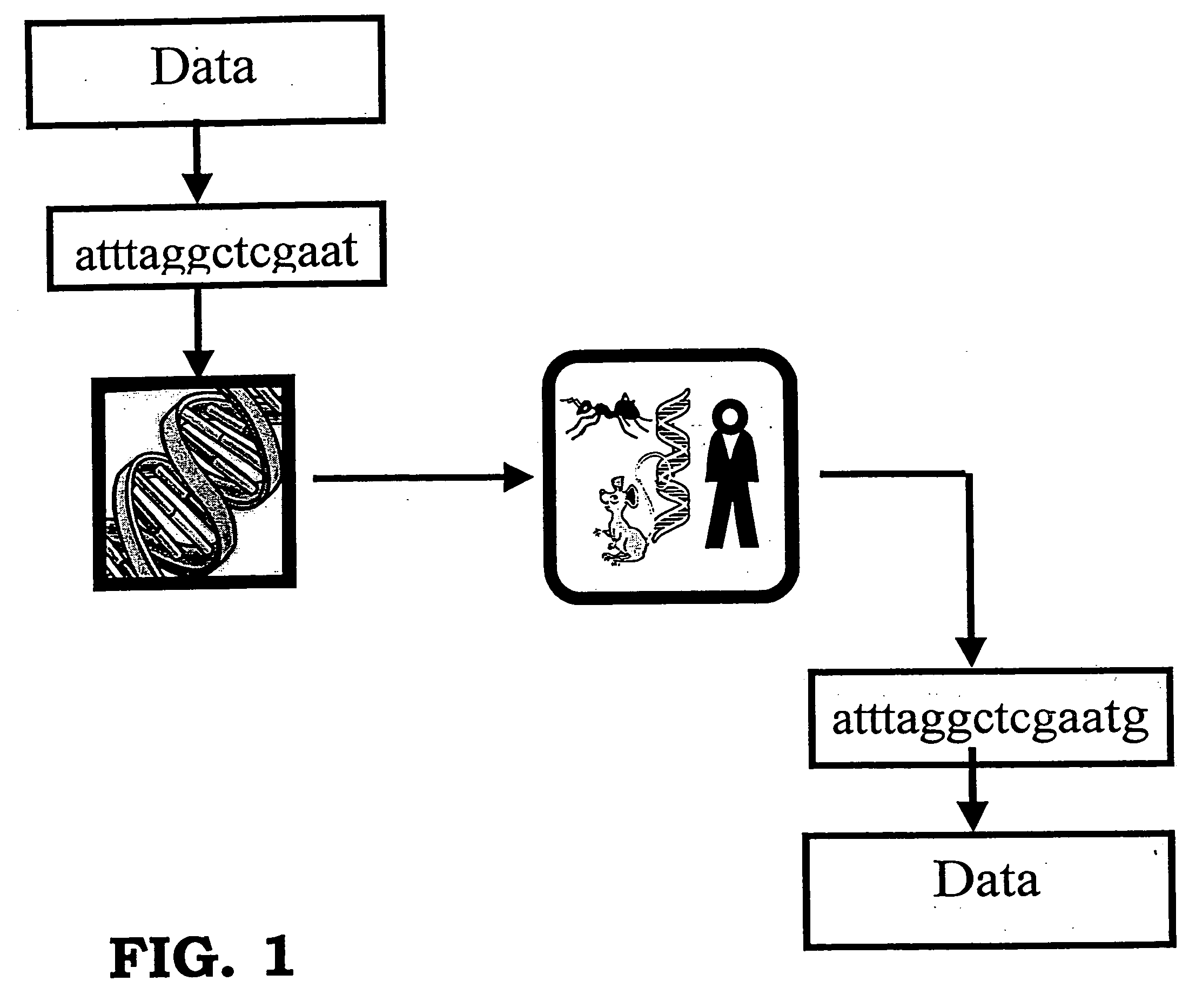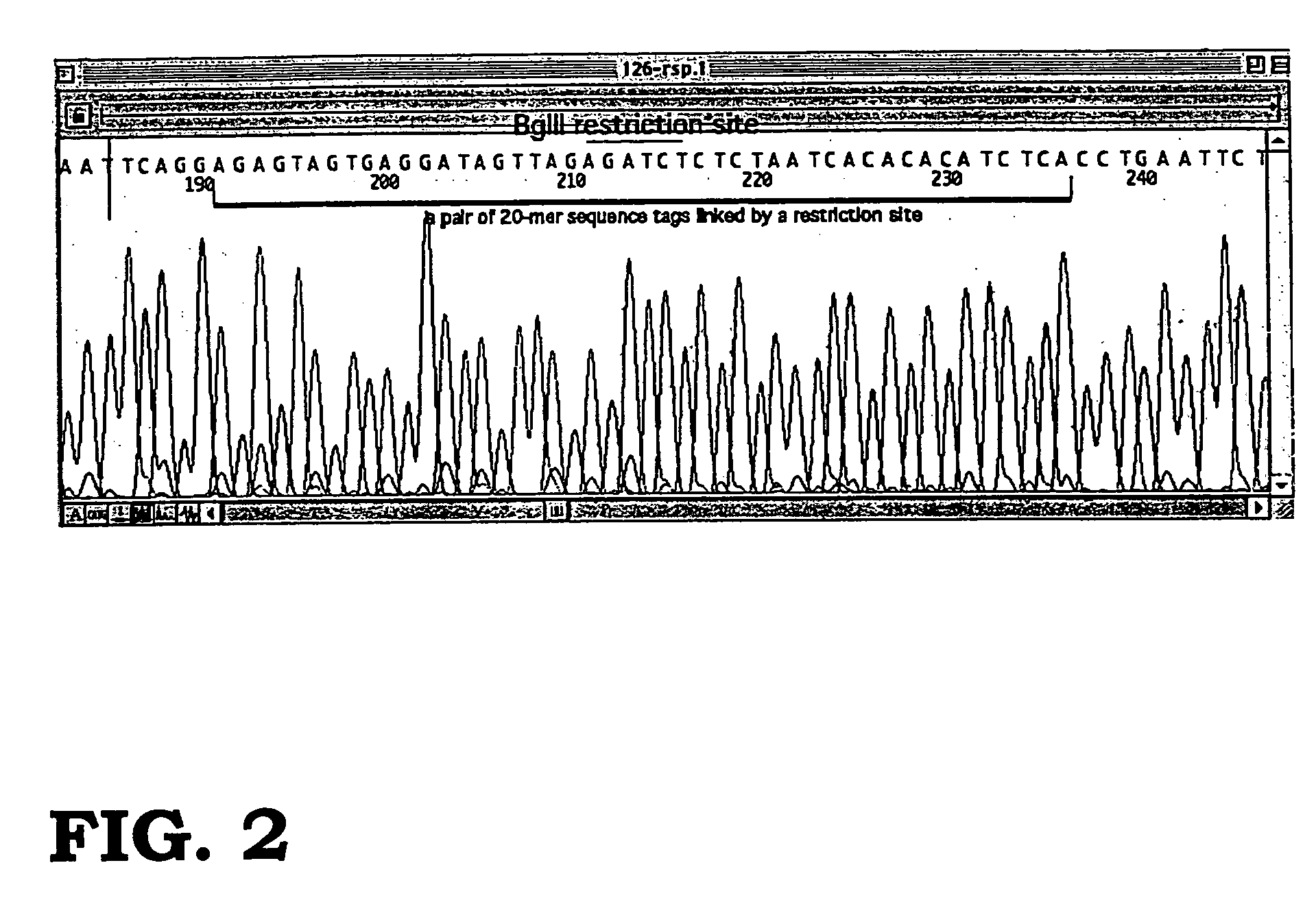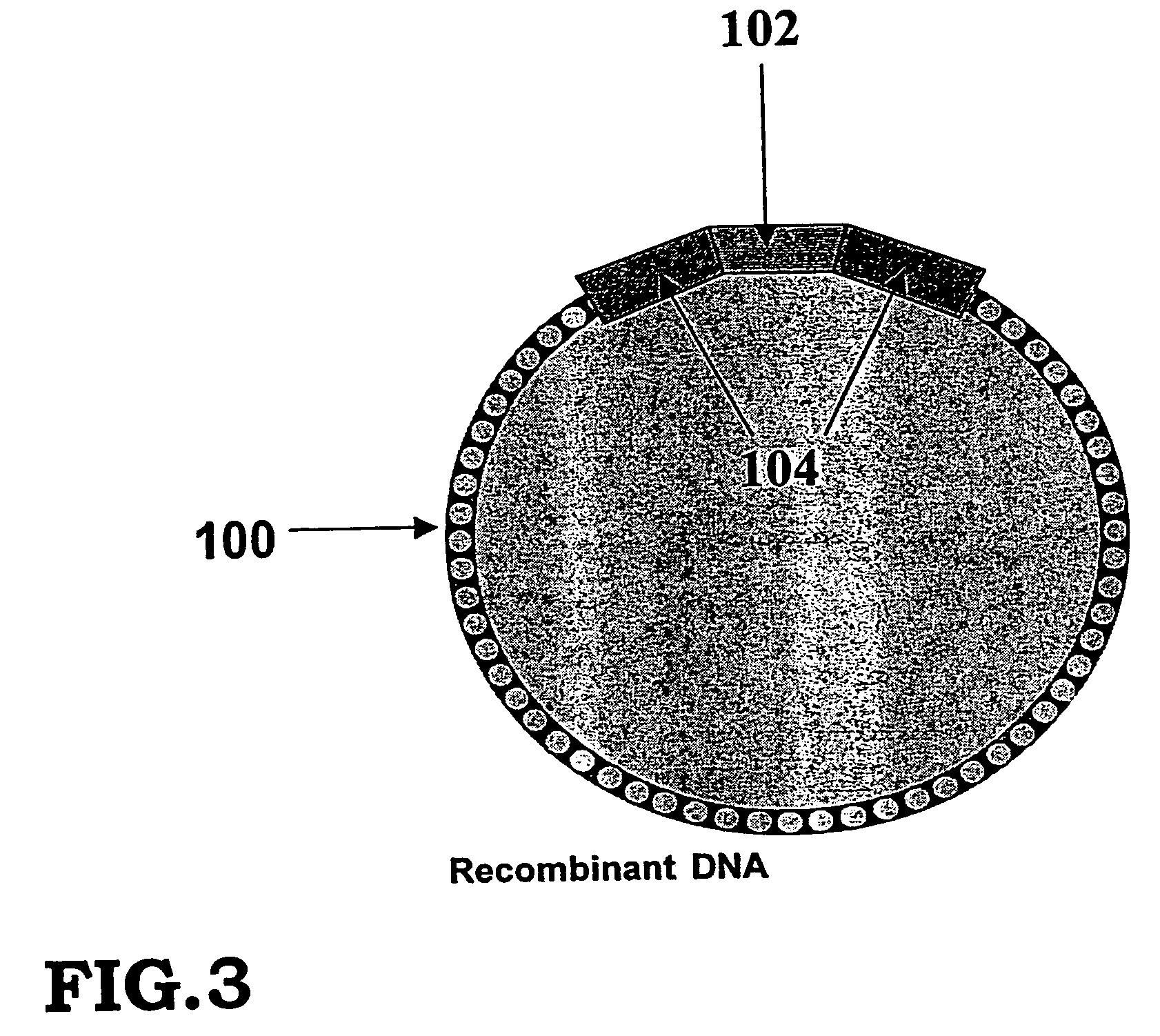Storing data encoded DNA in living organisms
a technology of living organisms and data, applied in nanoinformatics, instruments, stamping and other directions, can solve the problems of large data preservation problems behind today's information superhighway, disasters can easily destroy all of them intentionally or accidentally, and naked dna molecules can easily be destroyed
- Summary
- Abstract
- Description
- Claims
- Application Information
AI Technical Summary
Benefits of technology
Problems solved by technology
Method used
Image
Examples
example 1
[0032] DNA Host Identification—Two well-understood bacteria, Escherichia coli (E. coli) and Deinococcus radiodurans (D. radiodurans), were utilized for our experiment. We selected E. coli and D. radiodurans because microorganisms, in general, grow very rapidly and the embedded information can be inherited rapidly and continuously. Deinococcus, survive extreme conditions such as ultraviolet, desiccation, partially vacuum environments, and ionizing radiation up to 1.6 million Rad (about 0.1% of the same radiation dose would be fatal to human beings). Some strains of Deinococcus can also tolerate high temperature. Although bacteria were chosen as preferred embodiments, it is understood that any living cell, whether single-celled or multicellular organism, can be used in the use of this invention.
[0033] Information Encoding—A (Adenine), C (Cytosine), G (Guanine), and T (Thymine) were used to assemble a DNA sequence information stream to represent data. Table 1 depicts the encoding key ...
PUM
| Property | Measurement | Unit |
|---|---|---|
| temperature | aaaaa | aaaaa |
| time | aaaaa | aaaaa |
| temperatures | aaaaa | aaaaa |
Abstract
Description
Claims
Application Information
 Login to View More
Login to View More - R&D
- Intellectual Property
- Life Sciences
- Materials
- Tech Scout
- Unparalleled Data Quality
- Higher Quality Content
- 60% Fewer Hallucinations
Browse by: Latest US Patents, China's latest patents, Technical Efficacy Thesaurus, Application Domain, Technology Topic, Popular Technical Reports.
© 2025 PatSnap. All rights reserved.Legal|Privacy policy|Modern Slavery Act Transparency Statement|Sitemap|About US| Contact US: help@patsnap.com



